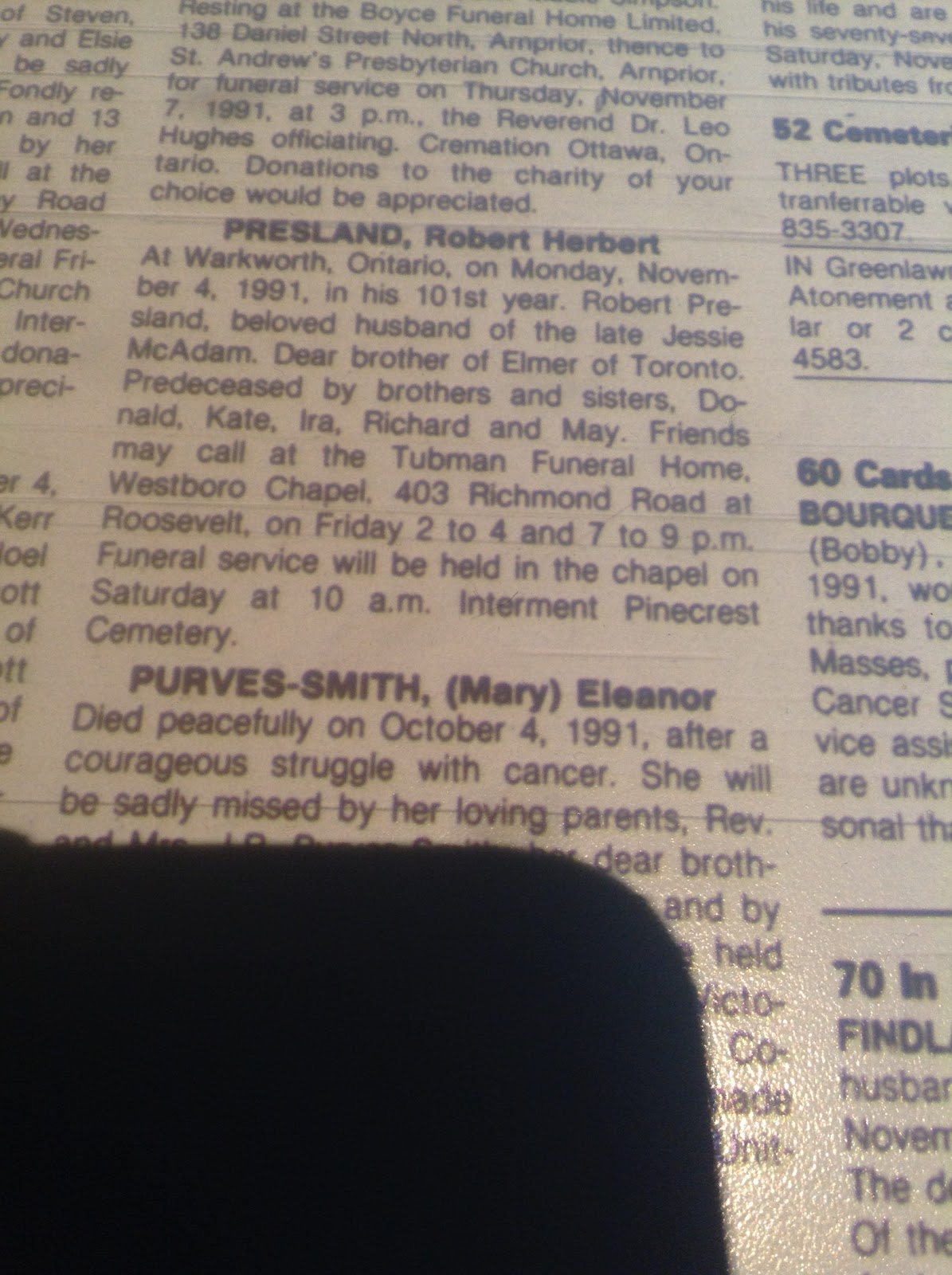Waymark Code: WMRM2F
Because this is my first waymark in the category, I will hold off posting until my 900th waymark post.
St Paul's Anglican Church Cemetery is west of Almonte, 177 Wolf Grove Road.
Information on the marker is no longer visible. According to the Find A Grave web site, as recently as 2012, self-adhesive letters marked the surname CROSSLEY on the metal monument. The marker itself dates back before 1985, perhaps long before 1985, when the Ottawa chapter of the Ontario Genealogical Society recorded and published the monumental inscriptions for the cemetery.
Many of members of the local Crossley family were part of the Anglican church. A few of those were definitely buried in this cemetery. However, there are no other monuments in this cemetery with the surname Crossley, suggesting that this marker is on a family plot.
For the purposes of the waymarking variables, I will use the immigrant patriarch of the Crossley family, John Crossley (1821-1899).
The text below is taken from The Almonte Gazette newspaper, 31 March 1899, page 1.
One of Almonte's finest old citizens passed out of life on Tuesday morning last in the person of Mr. John Crossley, who had been in poor health for some time past. An intelligent, genial, courteous old man, known to nearly everyone in town, he will be missed. Deceased was born in Rochdale, England, 78 years ago. After his boyhood years he worked at the cotton business for a time in his native land. He crossed the Atlantic fifty-five years ago, and spent nearly twenty-five years (as boss weaver and superintendent for much of that time) in some of the big factories across the line. He came to Almonte in 1868, spent three years as boss weaver in No. 1 Mill, and on retiring was presented with a tangible evidence of the esteem of the weavers. He then spent a few years in partnership with Messrs. Teskey Bros., Appleton, in the factory there. Later on he became postmaster and storekeeper at Bennie's Corners, remaining there seven of eight years, when he again moved into Almonte, and spent the remaining years of his long life here as a weaver of carpets, etc. Fifty-two years ago, in Rochdale, England, Mr. Crossley was united in marriage with Mary Ann Wyld, who survives him, though we regret to say that Mrs. Crossley is quite ill at present, this shock of her husband's death having accentuated an illness that had confined her to bed for a week or more. Nine children were born to them, of whom but two survive -- John W., of this town, at whose home deceased passed away, and Joseph, of Watertown, N.Y. The late Mr. Crossely was a strong Anglican, a Conservative in politics, though ready to support a good man on either side of the political fence. The funeral took place this (Thursday) afternoon, at St. Paul's church, where Rev. Canon Low performed the burial service, thence to St. Paul's cemetery. Much sympathy is felt for the widow, now an octogenarian, and apparently near the end of her earthly pilgrimage.
Their daughter Mary Hannah Crossley (1858-1875) was likely the first one buried in this grave site. Daughter-in-law Mary (McAllister) Crossley (1860-1937) was definitely buried in St Paul's cemetery. Mary was predeceased by her husband John Wyld Crossley. It is probable that these individuals were once listed on this marker.
The design of the metal grave-site marker reflects the life of John Crossley as a weaver and the life of his son John Wyld Crossley (1857-1928) as a carriage maker.




















































